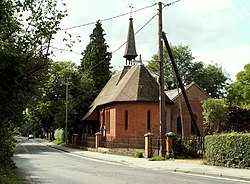
Saffron Walden is a market town in the Uttlesford district of Essex, England, 12 miles (19 km) north of Bishop's Stortford, 15 miles (24 km) south of Cambridge and 43 miles (69 km) north of London. It retains a rural appearance and some buildings of the medieval period. The population was 15,504 at the 2011 census.
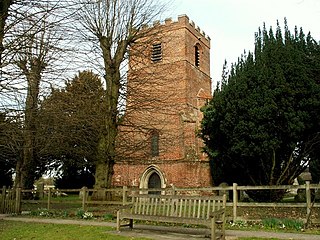
Ugley is a small village and civil parish in the non-metropolitan district of Uttlesford in Essex, England. It is about 2 miles (3 km) north from Stansted Mountfitchet, and situated between Saffron Walden and Bishop's Stortford. Within the parish is the village of Ugley Green, 1.5 miles (2.4 km) to the south.

Clavering is a village and also a parish in north-west Essex in England. It is about 20 miles (32 km) from Cambridge and 50 miles (80 km) from Southend-on-Sea. The name 'Clavering' means 'place where clover grows'.

Saffron Walden is a constituency in Essex represented in the House of Commons of the UK Parliament since 2017 by Kemi Badenoch, a Conservative.

Arkesden is a village and civil parish in the Uttlesford district of Essex, England.

Ashdon, is a village and civil parish in Essex, England. It is about 4 miles (6 km) northeast of Saffron Walden and 23 miles (37 km) northwest from the county town of Chelmsford. The village is in the district of Uttlesford and the parliamentary constituency of Saffron Walden. The village has its own Parish Council.
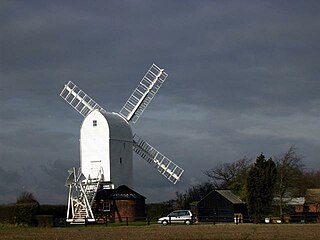
Aythorpe Roding is a village and civil parish in the Uttlesford district of Essex, England. The village is included in the eight hamlets and villages called The Rodings. Aythorpe Roding is 9 miles (14 km) northwest from the county town of Chelmsford.

Broxted is a village and civil parish in the Uttlesford district, in the county of Essex, England. It is situated 11 km (6.8 mi) north-east from Bishop's Stortford, Hertfordshire and 23 km (14 mi) north-west from the county town of Chelmsford.

Henham, or Henham-on-the-Hill is a village and civil parish in the Uttlesford district of Essex, England. The village is situated 2.5 miles (4 km) north from London Stansted Airport. The parish includes the hamlets of Little Henham and Pledgdon Green. Parish population at the 2011 Census was 1,233.

Newport is a large village and civil parish in the Uttlesford district in Essex, near Saffron Walden. The village has a population of over 2,000, measured at 2,352 at the 2011 census.

For the historic house in Essex called Langley's, see Great Waltham.
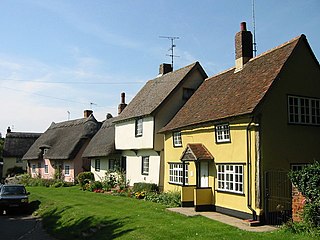
Wendens Ambo is a village in the Uttlesford district of Essex, England. The population at the 2011 census was measured at 473. Its name originates from the merging of two originally separate villages called Wenden Magna and Wenden Parva, ambo being the Latin for "both".
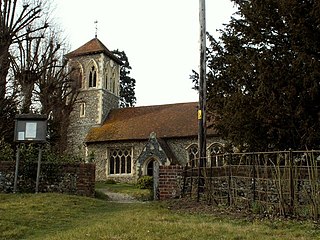
Wicken Bonhunt is a village and a civil parish of north-west Essex, in the non-metropolitan district of Uttlesford, England. It is on the B1038 (Buntingford) road and is midway between the larger villages of Newport and Clavering. The nearest town is Saffron Walden, approximately 5 miles (8 km) away. Stansted Airport is approximately 10 miles (16 km) away. The civil parish has a population of approximately 839.
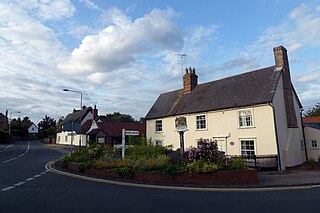
Littlebury is a village and civil parish in the Uttlesford district, north-west Essex, England. The village is approximately a mile and a half from the market town of Saffron Walden, 12 miles (20 km) south from Cambridge, the nearest city, and 23 miles (37 km) north-east from the county town and city of Chelmsford.

Hatfield Heath is a village, civil parish, and an electoral ward in the Uttlesford district of Essex, England, and at its west is close to the border with Hertfordshire. In close proximity are the towns of Bishop's Stortford and Sawbridgeworth. Stansted Airport is approximately 5 miles (8 km) to the north.

Leaden Roding is a village and civil parish in the Uttlesford district of Essex, England. The village is included in the eight hamlets and villages called The Rodings. Leaden Roding is 8 miles (13 km) north-west from the county town of Chelmsford.

Great Sampford is a village and civil parish on the junction of the B1053 and B1051 roads in the Uttlesford district, in the north-west of the English county of Essex. The population of the civil parish at the 2011 Census was 586. The village includes a primary school, two places of worship and one public house. It is located three miles to the north-east of the town of Thaxted and eight miles to the south-east of Saffron Walden.

Rickling is a village and former civil parish, now in the parish of Quendon and Rickling, in the Uttlesford district of Essex, England. The village is situated approximately 6 miles (10 km) north from the town of Bishop's Stortford. Saffron Walden, at 5 miles (8 km), and the larger village of Newport, at 2 miles (3 km), lie to the north-east. In 1931 the parish had a population of 378.

The Hundred Parishes is an area of the East of England with no formal recognition or status, albeit that the concept has the blessing of county and district authorities. It encompasses around 450 square miles of northwest Essex, northeast Hertfordshire and southern Cambridgeshire. The area comprises just over 100 administrative parishes, hence its name. It contains over 6,000 listed buildings and many conservation areas, village greens, ancient hedgerows, protected features and a historical pattern of small rural settlements in close proximity to one another.

Littlebury Green is a village in the civil parish of Littlebury and the district of Uttlesford in Essex, England.
